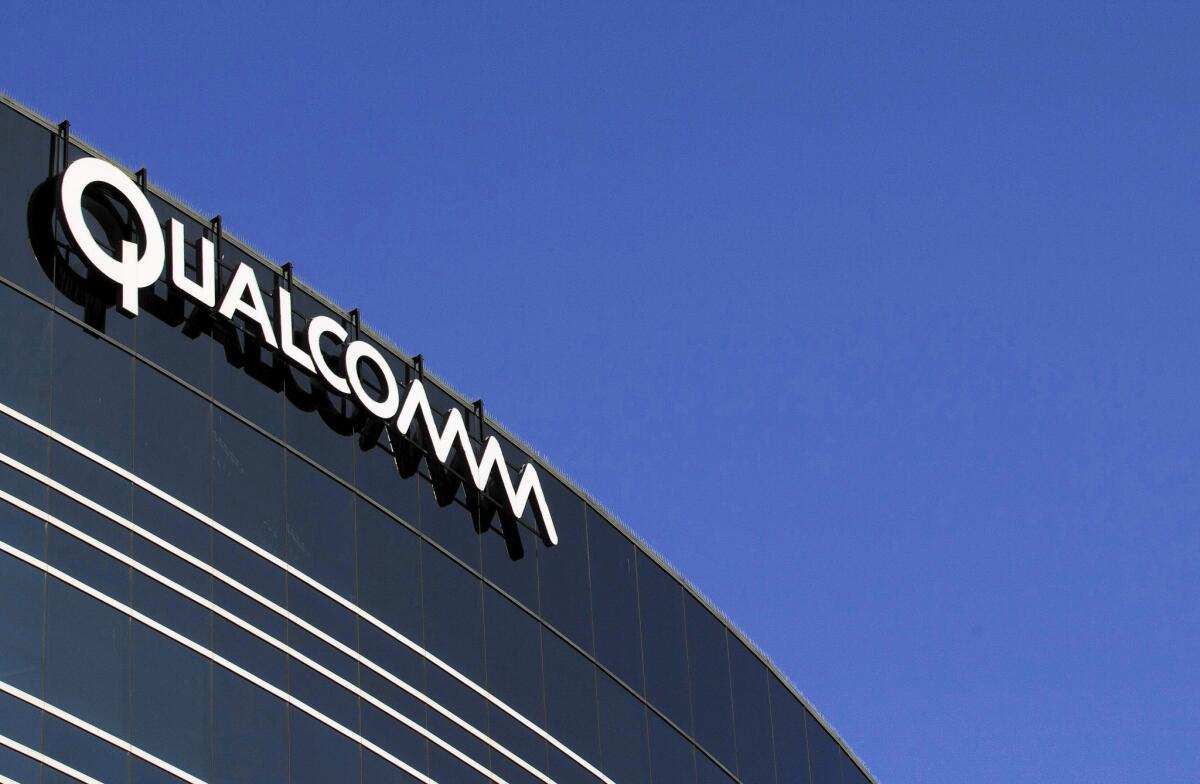Tech industry’s persistent claim of worker shortage may be phony

Alice Tornquist, a Washington lobbyist for the high-tech firm Qualcomm, took the stage at a recent Qualcomm-underwritten conference to remind her audience that companies like hers face a dire shortage of university graduates in engineering. The urgent remedy she advocated was to raise the cap on visas for foreign-born engineers.
“Although our industry and other high-tech industries have grown exponentially,” Tornquist said, “our immigration system has failed to keep pace.” The nation’s outdated limits and “convoluted green-card process,” she said, had left firms like hers “hampered in hiring the talent that they need.”
What Tornquist didn’t mention was that Qualcomm may then have had more engineers than it needed: Only a few weeks after her June 2 talk, the San Diego company announced that it would cut its workforce, of whom two-thirds are engineers, by 15%, or nearly 5,000 people.
The mismatch between Qualcomm’s plea to import more high-tech workers and its efforts to downsize its existing payroll hints at the phoniness of the high-tech sector’s persistent claim of a “shortage” of U.S. graduates in the “STEM” disciplines — science, technology, engineering and mathematics.
As millions of students prepare this summer to begin their university studies, they’re being pressed to choose STEM fields, if only to keep America in the lead among its global rivals. “In the race for the future, America is in danger of falling behind,” President Obama stated in 2010. He labeled the crisis “our generation’s Sputnik moment.”
SIGN UP for the free California Inc. business newsletter >>
The high-tech industry contends that U.S. universities simply aren’t producing enough graduates to meet demand, leading to a “skills gap” that must be filled from overseas if the U.S. is to maintain its global dominance. Low unemployment rates among computer workers imply that “demand has outpaced supply,” Jonathan Rothwell of the Brookings Institution told me by email. “Companies struggle to fill job vacancies for skilled programmers and other STEM fields.”
Yet many studies suggest that the STEM shortage is a myth. In computer science and engineering, says Hal Salzman, an expert on technology education at Rutgers, “the supply of graduates is substantially larger than the demand for them in industry.” Qualcomm is not the only high-tech company to be aggressively downsizing. The computer industry, led by Hewlett-Packard and Microsoft, cut nearly 60,000 jobs last year, according to the outplacement firm Challenger, Gray & Christmas. The electronics industry pared an additional 20,000 positions.
Nevertheless, high-tech employers such as Qualcomm, Google, Microsoft and Facebook lobby hard for more latitude in employing workers on H-1B visas. These are designed to serve high-skilled immigrants but often enable the importing of Indian and Chinese guest workers to replace an older, more experienced, but more expensive domestic workforce. Visa issuance is capped at 85,000 per year, including foreign holders of U.S. advanced degrees, but a bill sponsored by Sen. Orrin G. Hatch (R-Utah) would raise the limit to as many as 195,000.
“If you can make the case that our security and prosperity is under threat, it’s an easy sell in Congress and the media,” says Michael Teitelbaum, a demographer at Harvard Law School and author of the 2014 book “Falling Behind? Boom, Bust, and the Global Race for Scientific Talent,” which challenges claims of a STEM shortage in the U.S.
Despite its “cost-cutting initiative,” a company spokesperson says, Qualcomm “continues to have open positions in specific areas, and still faces a “‘skills deficit’ in all areas of today’s workforce, especially engineering.”
Fears about an American deficit in science and technical know-how have erupted regularly since World War II, Teitelbaum observes. Often they produce a boom in demand and supply, followed by a bust. Interest in science and engineering courses arose after the 1957 Sputnik launch, which raised public concerns that the Soviet Union’s technical capability was surpassing America’s. By the 1970s, when many of these inspired students were deeply into their doctoral or post-doc careers, they were discovering that demand for their skills had disappeared.
An entire generation “had been told that this was a great national emergency, that we needed scientists,” the chairman of MIT’s physics department lamented at the time. “Now they are out on the street and naturally they feel cheated.” California aerospace workers in the 1980s and high-tech engineers after the dot-com collapse in 2000 felt the same dizzying sensation.
Nailing down demand and employment in STEM fields is difficult because there’s no single accepted definition for a STEM job. Estimates of the number of STEM jobs range from 5 million to 19 million, according to the National Science Foundation, depending on what’s included. Many are technical jobs that don’t require even a bachelor’s degree.
Teitelbaum and others observe that the tech industry’s lobbying to hire more foreign engineers is at cross purposes with its call to encourage more U.S. students to acquire STEM degrees. After all, why should students labor for four or six years to enter industries in which they can be suddenly replaced in an outsourcing campaign?
The industry’s push for more visas glosses over other issues. As we’ve reported, the majority of H-1B visas go not to marquee high-tech companies such as Google and Microsoft, but to outsourcing firms including the India-based giants Infosys and Tata. They’re not recruiting elite STEM graduates with unique skills, but contract workers to replace American technical employees — who often are required to train their foreign-born replacement as a condition of receiving their severance. This is the scandalous method of cost-cutting used by companies such as Southern California Edison, which outsourced the jobs of some 500 information technology employees, as we reported in February.
For such companies, raising the visa limit is about exploiting a loophole in immigration law to save money — workers on these temporary visas are typically paid less than U.S. employees doing the same work, and more complaisant with American bosses because they’ll be deported if they lose their jobs. Companies such as Google and Qualcomm do benefit from H-1B visas, but on a lower scale than the outsourcing firms. In 2013, Qualcomm secured visa approvals for 909 new workers, according to government figures compiled by Computerworld. Infosys got 6,300.
It’s unlikely that such hard numbers will silence the drumbeat for more high-tech immigration, Teitelbaum says, as long as big tech companies have Congress’ attention. “The lobbying opposition is weak,” he says. “There’s no interest group that’s as well organized and financed to say that this is an emperor with no clothes on.”
Michael Hiltzik’s column appears every Sunday. Read his blog, the Economy Hub, every day at latimes.com/business/hiltzik, reach him at mhiltzik@latimes.com, check out facebook.com/hiltzik and follow @hiltzikm on Twitter.
MORE FROM HILTZIK:
Georgia claims that publishing its state laws for free online is ‘terrorism’
Religious ‘freedom’: Judges bar pharmacies from withholding contraceptives
How a hugely overpriced hepatitis drug helped drive up U.S. health spending







